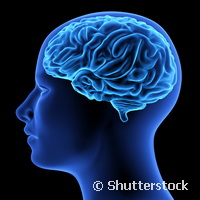Understanding how we use the past to predict the future
Recent research has offered strong evidence that the brain, when it is confronted with a specific stimulus, uses 'predictive coding' to create a mental expectation about what is going to happen next. In other words, the brain uses information from the recent past to predict what will happen in the future. Scientists would like to know exactly how the brain does this. Led by Dr Uri Hasson from the University of Trento, Italy, EU-funded project NEUROINT ('How the brain codes the past to predict the future') is using some of the most advanced neuroimaging methods to determine how the recent past is coded in the human brain and how this coding affects the processing of new information. Dr Hasson received a Starting Grant from the European Research Council (ERC) worth EUR 978 678 for the project. Predictive coding is important because it provides animals - including humans - with a behavioural advantage. The NEUROINT team are implementing a comprehensive research programme to understand how regularities in the recent past are coded, and how they give rise to predictive codes of future states. Based on prior research, project partners have suggested that the predictive system relies mainly on three neural systems. The research suggest that medial temporal brain structures, including the hippocampus and parahippocampal cortex, encode statistical features of the recent past and signal whether predictions are warranted. Meanwhile, higher-level cortical regions generate 'top-down' predictions, while lower-level sensory cortices process 'bottom-up' sensory inputs. They also assess these inputs against predictions sent from higher level regions. NEUROINT is testing this hypothesis using neuroimaging methods with high spatial and temporal resolution to study activity in these three neural systems and the interactions between them. The resulting data could provide important information about a fundamental process in the human brain, helping us to better understand how we process the recent past. This information could then possibly be used to help us adapt to future events. The NEUROINT project will be concluded in December 2014.For more information, please visit: Project factsheet University of Trento http://www.unitn.it/
Countries
Italy



